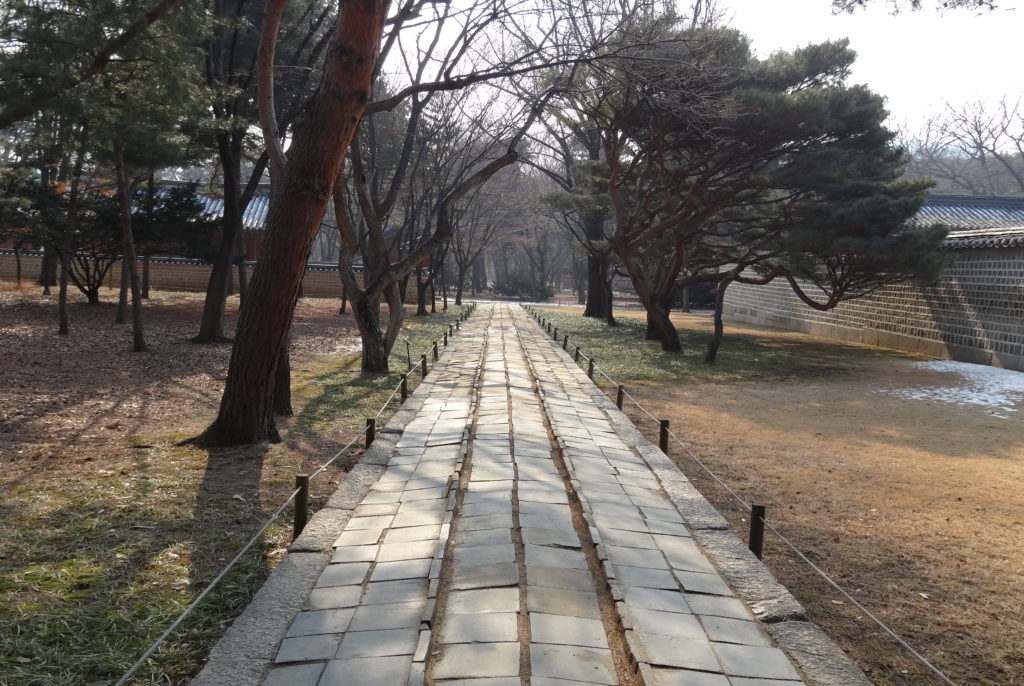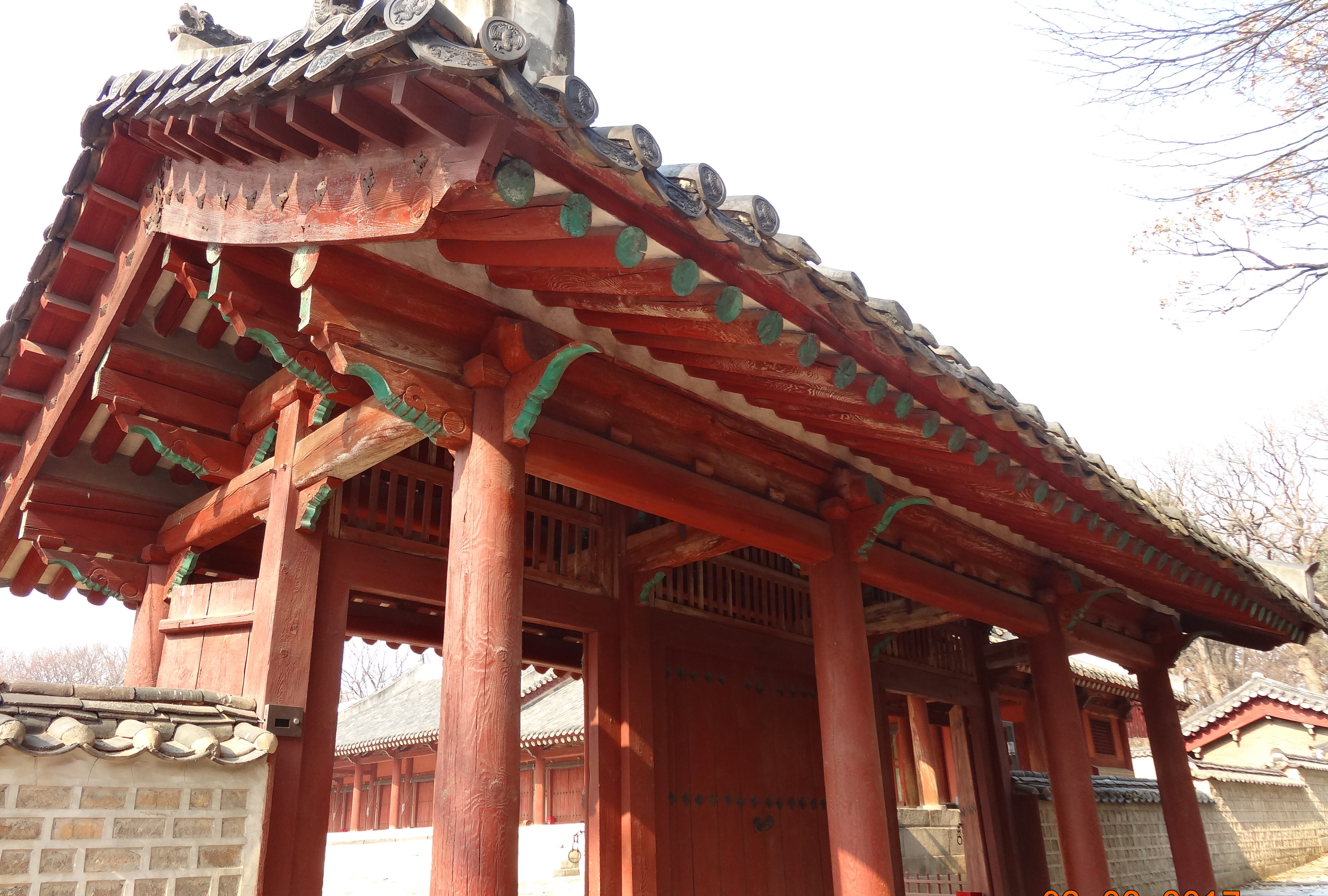Travel period Feb 2017
Visiting Confucian Shrine

2 pm on a cold winter day in Seoul. Our Korean guide arrived. She was very professional about her guide tour to Jongmyo Shrine.

Jongmyo Shrine was listed as a UNESCO World Heritage in 1995. This shrine was recorded to be the primary place of worship for the Kings in the Joseon Dynasty. It was also said to be the oldest preserved royal Confucian shrine.

Our tour starts at Hyangdaecheong, a small building complex that held important supplies such as ritual paper, incense, and offerings used during ancestral rituals and sacrifices. On the day before an ancestral ritual, the king would send an official to Hyangdaecheong to retrieve supplies and utensils needed for the ceremony.
There was also a separate courtyard (Jaegung) for the king and crown prince to change into special ritual robes for the event. For ritual (and perhaps also literal) cleansing they would also take a bath in this place, only a few steps from the main shrine.
The layout of all these buildings was dictated by complicated geomantic rules (feng shui): East of the palace, but before the mountains, and so on. “They even had to add a small man-made hill in the Southern part of the precincts to get it right”, our guide claimed.


All the facilities at the Jongmyo Shrine have a very specific purpose and meaning according to Confucian philosophy. For example, Sillo, the long walkway with three parallel stone footpaths leading from the main gate to the two main shrine buildings, is the passageway for the spirits of the deceased.
The center path is for officiants carrying the tablets, offerings, etc, while the right path is for the king and the left path is for the crown prince. Each path was paved with rough stones, forcing people to walk slowly and solemnly. Special platforms called Panwi denoted where the king and crown prince would stop and pay their respects.

Finally, we reached Jeongjeon Hall, the large shrine for the royal ancestors that was for their souls. The ashes were buried in a different location.
In the centre of Jongmyo Shrine, is a very long building with wings extending to the sides, consisting of 19 spirit chambers all opening to the front yard. Each chamber is for a different royal ancestor. Today, Jeongjeon Hall houses 49 tablets in 19 spirit chambers of past kings.

Yeongnyeongjeon Hall was originally built with ten spirit chambers but was expanded over the years. It houses 34 tablets in 16 spirit chambers.
Kings who had ruled only briefly, and those very first ancestors who had not yet been kings, were moved to Yeongnyeongjeon Hall, including four generations of King Taejo’s ancestors and those crowned kings after their death. We learned that Confucianism was very competitive even in death.

Gongsindang (Hall of Meritorious Officials) is the location of the tablets for those who assisted the enshrined kings and queens at Jongmyo Shrine. There are 83 tablets enshrined here.
When the building was originally built it had three chambers. It has since been expanded to 16 chambers.
The design of Gongsindang is beautiful but generally artless and plain compared to nearby Jeongjeon Hall and Yeongnyeongjeon (Hall of Eternal Peace).

But for the most part, Jongmyo, with its massive stone yards surrounded by shuttered buildings, felt empty and lacked the vibrancy of the royal palace grounds. We would have to come back when the ritual ceremony takes place. Only then could we start to appreciate why Jongmyo was inscribed on the UNESCO World Heritage list in 1995, and the rites & ancestral ritual music designated by UNESCO as Masterpieces of the Oral and Intangible Heritage of Humanity in 2001.
Directions to Jongmyo Shrine
Take Subway Line 1 to Jongno-3-ga Station (Exit 11). OR
Take Subway Line 3 or Line 5 to Jongno-3-ga Station (Exit 8).
Hours
March-September: 9:00-18:00
October-February: 9:00-17:30
Ticket office close 1 hour before closing time.
Except for Saturdays, visitors to Jongmyo Shrine must join a guided tour. Guided tours in English are at 10:00, 12:00, 14:00, 16:00.
Closed on Tuesday
Fees
Adult (19+): KRW 1,000
Child: KRW 500
This palace is included with the Integrated Ticket of Palaces.
Note: The information provided in this post was correct at time of publishing but may change. For final clarification please check with the relevant service.

